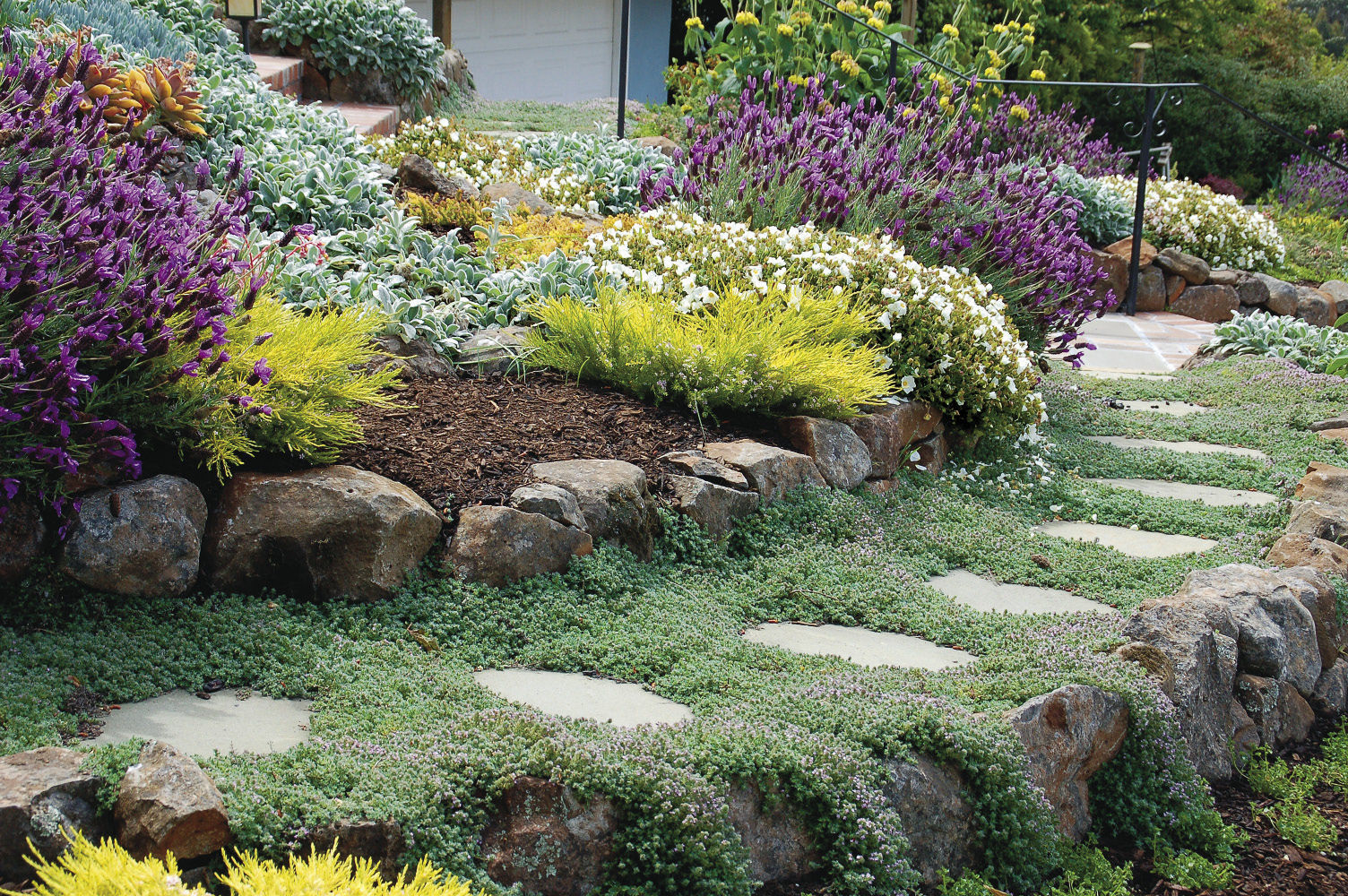Designing from the ground up: Ground covers for your landscape

MACOMB, Ill. — Our landscapes are more than flowers and trees.
Within a natural landscape, you will find multiple layers starting at the ground level and moving all the way up into the canopy of the trees. Plants will intermingle creating communities based on the conditions present such as shade, heavy clay soil, or a steep slope. Many of our home landscapes have unique site conditions. Ideally, we select plants that fit within the context of our property and design layer upon layer.
One layer that often gets neglected is the ground cover layer. Ground cover as its name implies is a layer of plants that spreads along the ground creating the canvas for the taller plants. In my yard, much of the ‘canvas’ is comprised of violets, wild strawberry, and creeping Charlie — perhaps not something the typical homeowner would enjoy. However, there are some stellar ground cover choices for Illinois homes. Following are just a few pf those choices.
Lily-turf (Liriope spp.)
A recent visit to historical Nauvoo revealed a ground cover I have known for decades but have often cast aside. Liriope is a grasslike ground cover that horticulturists in Nauvoo have planted around their trees. Instead of rings of mulch, these are rings of liriope that get mowed down once a year in early spring. When it comes to selection, there are often two species that can be found in garden centers. Creeping lilyturf (Liriope spicata), can be an aggressive spreader and grow out of bounds if not contained. Another option is blue lilyturf (Liriope muscari) which is a bit larger but spreads slowly. Both species produce flower spikes in mid-to-late summer and can be grown in sun or shade.
Lungwort (Pulmonaria sacharata)
One of the first perennials I learned about in school, the scientific name sacharata describes the plant as sweetened. Not because of its flavor, but the green leaves are speckled with spots of white that give the plant an appearance of being dusted in sugar. Or at least that’s the trick I used to memorize the plant’s scientific name. Last year, out of nostalgia I purchased lungwort, only thinking about leaf coloration. However, this spring I am delighted by its flower display of blue and orange. These plants do well in shade and have tolerated the drier soil conditions under the overhang of my porch so long as I remember to water them every so often.
Creeping juniper (Juniperus spp.)
If you’re wanting a low-growing evergreen ground cover, creeping juniper might be your plant. There are many different species of creeping juniper. Likely one of the most popular cultivars is known as ‘Blue Rug’. However, there are many different cultivars out there some with tints of blue, others bright green, and others still that are golden in color. Creeping junipers are often used in full sun, in harsh soil conditions, and places with low water use. I often call this the “trash can” plant because it tends to accumulate lots of trash that blow underneath the foliage. Every so often, lift the foliage and rake out debris growing underneath.
Good Growing Tip of the Week: How many ground cover plants do you buy? The spread of plants can vary even within the same species. So be sure to know the square foot you wish to cover and read the plant tag to determine how much ground these plants will cover.
Miss Clipping Out Stories to Save for Later?
Click the Purchase Story button below to order a print of this story. We will print it for you on matte photo paper to keep forever.

